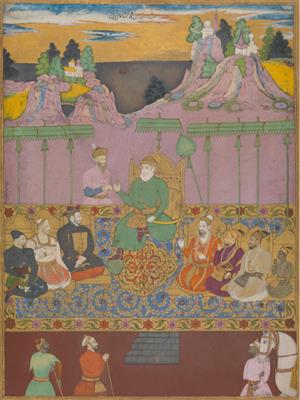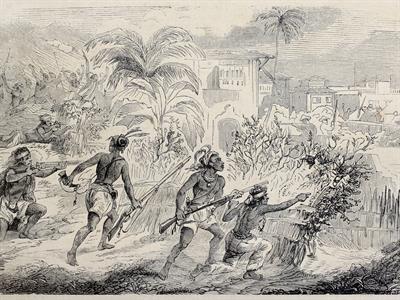PDF chapter test TRY NOW
The Power centre of South-West
- During the latter half of the \(17th\ century\), India witnessed the rise of some alternate power centres in other parts of the Sub-Continent. Until that time, the Mughal empire was the most dominant of all the empires challenged by some regional forces
- The South-Western part of India saw the emergence of regional forces who called themselves the “Marathas”. Shahji Bhonsle, the father of Shivaji, controlled the affairs of the Deccan Sultanates (Ahmednagar and Bijapur), which irked the Mughals.

Deccan Sultans
- During the latter period, his son rose against the Mughal emperor Aurangzeb and posed a constant threat to the expansionary attitude of Mughals.
- Shivaji, considered to be the ablest ruler of Marathas had strong tactics and forces to defend his territory and keep a check on Mughal power.
The Rise of Marathas and the Fall of Mughals:
- The Period of Shivaji saw the greatest tussle between the Marathas and the Mughals in which the latter was put on back-foot after the death of its mighty ruler Aurangaseb.
- The Fall of the Mughal empire simultaneously witnessed the emergence of Marathas and their dominance in the Deccan region. Maratha kingdom has its administration setup which finely controlled the Deccan until the second half of the \(18th\ century\).
Reasons that Supported the Rise of Marathas:
- Geography and Terrain
- The decline of Deccan kingdoms
- Rise of Bhakti Movement
- Literature
Geography and Terrain
- Nature and the Geographical features highly supported the Marathas in defending their territory. The lofty mountains, inaccessible valley’s and towering forts played a pivotal role in protecting the Maratha territory.
- Adding to the natural barriers, the forces of Maratha warriors are highly trained in the method of mountain warfare and the Maratha army also had Mountaineer forces who were the experts of Mountain warfare.

Guerilla warfare
- Marathas also possessed a highly unique method of Fighting namely the “Guerilla warfare” which was not followed by any of its contemporary enemies. The Maratha people also serve in armies of Deccan sultans and are highly praised for their Courage and Discipline.
The decline of Deccan kingdoms
Rise of Bhakti Movement:

Tukaram – Bhakti Saint
The Bhakti movement witnessed the epoch during the reign of the Marathas. It created a sense of social equality, oneness and unity among the people of Marathas. Most of the rulers of the Maratha confederacy were influenced by the Bhakti saints.
BHAKTI SAINTS: The ideals of the Bhakti movement were carried forward by leading saints like Tukaram, Eknath and Ramdas during the Maratha regime.
Literature under Marathas:
- The Marathas had their language in the form of “Marathi”, which was followed by the people of all walks of Maratha society. The language also established social equality.
- Songs and hymns composed in the Marathi language were used by the poets and saints, which spread across the lengths and Breadths of the Maratha territory.
